The Neuroptera, also known as Planipennia, is one of the oldest insect orders with complete metamorphosis habitat. The Neuroptera or the net-winged insects includes – Mantidflies, lacewings and ant-lions and which relatively rangeupto 6000 species. They are grouped together with Megaloptera and Raphidioptera under the superfamily Neuropterida (Planipennia) and distributed among 17 families forming a really small order. It generally has the green and brown lacewings, antlions, owlflies, dustywings, mantidflies, etc. The family members exhibit a wide variety of habitats and display an array of life styles. Because of their lacey and colorful wings, delicate bodies, and evolving biology, Neuroptera are an order that attracts both the taxonomists and normal people.
The name Neuroptera has emerged from the ancient greek words neuron and pteron, which means tendonous-wings, and refers to a complex net like pattern or arrangement of their veins and crossveins giving a distict shape to their wings. However the collective word also sometimes may be refered to as ‘nervation of the sinews’. Neuroptera are a group of insects those have two pairs of membranous cross veined wings i.e. total four in number. Therefore, they are also known as net-winged insects. They have similar sizes wings with a complex net-like pattern. Neuropterans are rather very fragile insects with distinguishing characteristics. The adult Neuroptera have chewing mouthparts which are well-developed, but the larval mouthparths are well equipped with piercing and sucking jobs. They undergo complete metamorphosis, and are holo-metabolous in nature.
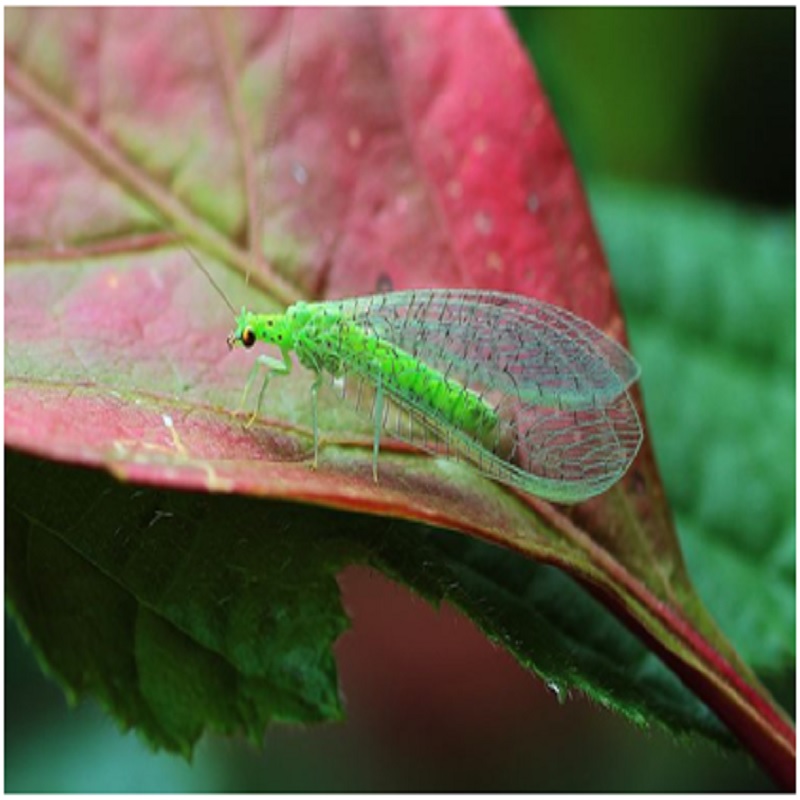
Green lacewings are the insects belonging to the large family of Chrysopidae under the Neuroptera family. Due to their wonderful lace-like wings they are referred to as Lacewings.Thegeneras are about 85 in no. with about 1200 species all over the world.The members of the Chrysopa and the Chrysoperla family however are inhabitants of the most parts of North America and Europe, very specific types are present worldwide.Studies suggests that the Chrysopa and the Chrysoperla are the same genus’s due to their similar characteristics traits, however there are speculations regarding their similarity, though on the other hand many members of Chrysoperla are seen to be redescribed from their Chrysopa counterparts.
Read MoreHemerobiidae are also an important family member of the order Neuroptera, and they are known as brown lacewings. The family comprises of about 28 genus’s and 500 described species under its head. The overall colour of the brown lacewings varies from yellow to dark brown, but however there are also some species which are green in color. The hemerobids are small in size as compared to the Chrysopids, with long forewings. The members of this family however differs from the chrysopids, not only in color but also due to their distinct wing venations. Eg.of some hemerobids are Hemerobius, Micromus,Notiobiella, Sympherobius, Wesmaelius.
Read More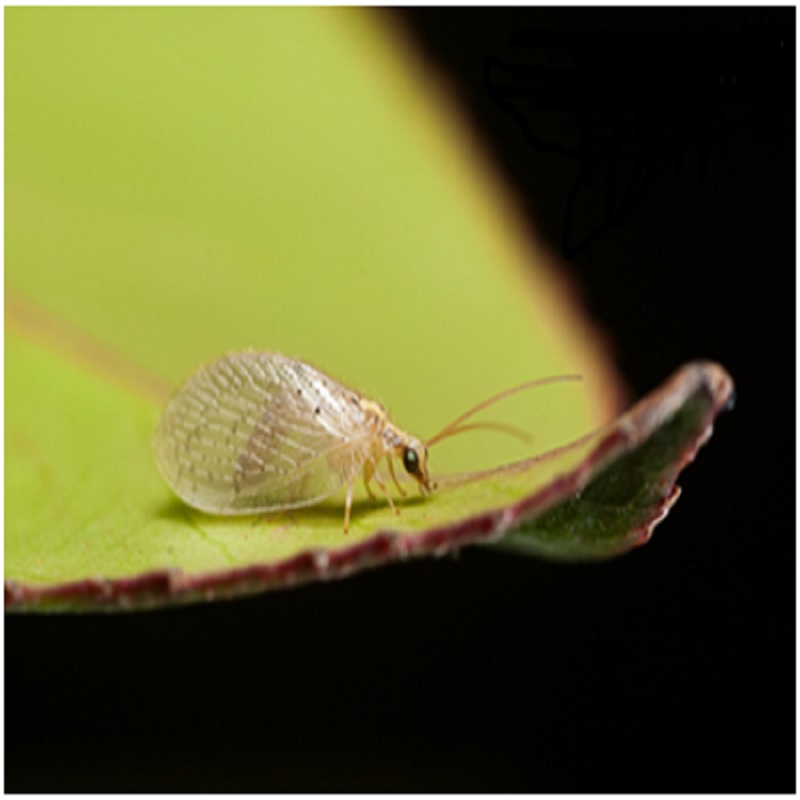

Dilaridae is a family under the order Neuroptera, which are also known as Pleasing lacewings because of their appearance. But earlier, according to the phylogenetic studies of Neuroptera reveals that the family of Dilaridae belonged to the superfamily Hemerobioidea. There are also studies which shows that Dilaridae may belong to the Mantispoidea, as well. This is mainly because they resemble the Mantidflies, and allies to them establishing an apomorphic relationship. There are about 9 genera in this family and about 100 valid described species all over the world, which belongs to Dilaridae.
Read MoreConiopterygidae, are the dusty lacewings that belongs to the superfamily Pterygota (winged insects), under the order Neuroptera. Dusty lacewings are very small members of this family and hence are usually determined by the genus through their appearance, more specifically observing their wing venation but for more distinctive observation, they are generally examined microscopically by studying their genitalia. These neuroptera adults have a distinguishing feature than the rest of the lacewings, in not having ‘net-winged’ venation, and like many other Neuroptera of other families, they also carry their wings in a side-by-side position during rest.
Read More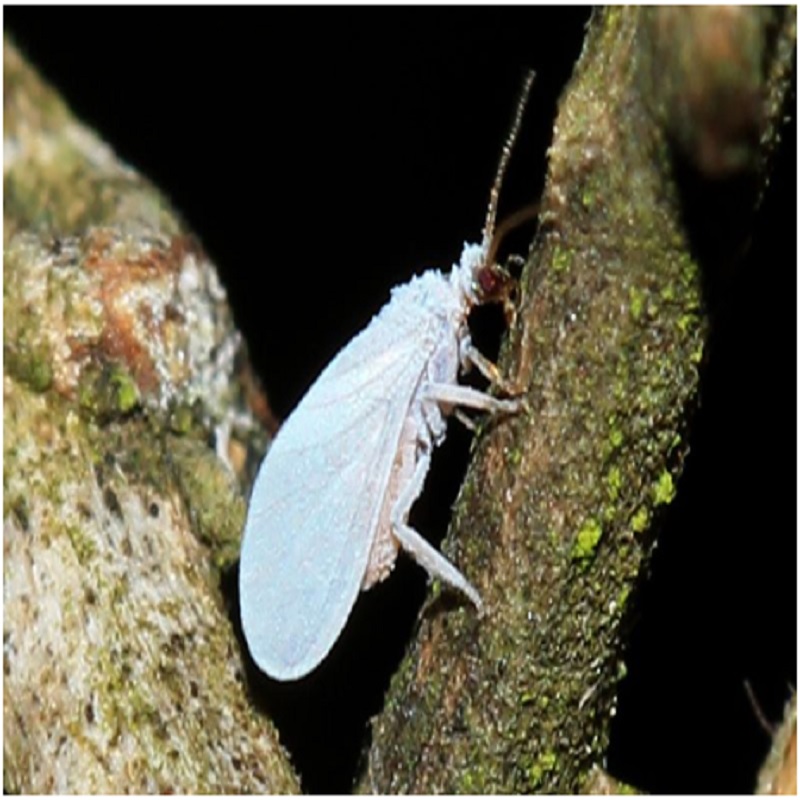
Neuropterans are soft bodied insects which exhibits some generalized distinguishing features such as they have large compound lateral eyes, they may or may not have ocelli, and exceptions are Osmylidae whose adults lack their ocelli. Unlike endopterygote insects, these neuropterans do not possess some of their features. But they have two pairs of similar wings, which are of mainly same shape and size with distinct and unique venation patterns. They also develop some specialized sense organs on their wings and bristles or contain some other structures that help them in connecting the wings during flight. They have three pairs of thoracic legs; each ending in two claws with an abdomen often possessing adhesive discs on the last two segments.
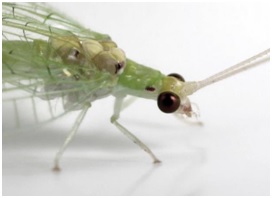
Neuropteran adults are distinguished by their wings and especially those are held in a roof-like position when they come at rest. The wings of Neuroptera have different characteristics and their wing venation pattern follow a set of rules- the branches of the veins on their wings which are generally bifurcated at the wing margins. The adult ones also possess mouthparts which are well equipped with strong mandibles generally used for chewing their food. They have antennae which are somewhat threadlike or may be bead-like in appearance, which differs from species to species. Unlike the larvae, they lack abdominal cerci.
The Neuropteran larvae are predators which have specialized strong and elongated mandibles on their mouthparts which helps them to pierce and suck. This is exactly why the neuropteran larvae differ in so many ways from their adult counterparts. The larva has large mandibles and maxilla which are slender-like and modified for sucking the juice out of the prey. In some, maxillary palpi are also absent. They have thorax which bears legs and segmented tarsi and claws, generally two in number which helps in locomotion.
The adhesive disks present in the abdomen also aids in their locomotion, in some they also lack abdominal cerci. Neuroptera larvae undergo strong metamorphosis by spinning silken cocoons within which they perform the task. The pupae have strong mandibles which are used to make channels for their exit. However the pupae are not well equipped to locomote unlike the adult ones, attachment of the legs and wings shows an unmannered fashion, though the abdomen is moveable for limited locomotion.
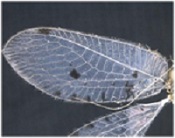
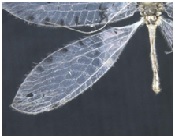
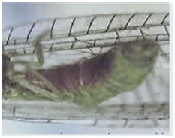
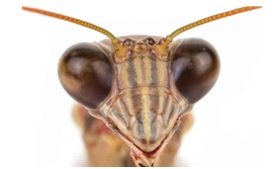
The Neuroptera fossils are mainly found preserved in the sedimentary rocks as wings, however very rare evidences were found of the total complete specimen impressions. Better states of preservations were found in the form of fossiliferous resins. All these evidences came from the Stratigraphic records from the Upper Permian era and the later formed the Cretaceous one. The cretaceous specimen included signs of Berothidae, Mantispidae and Osmylidae and other Neuropteran species from the Baltic amber of Eocene.
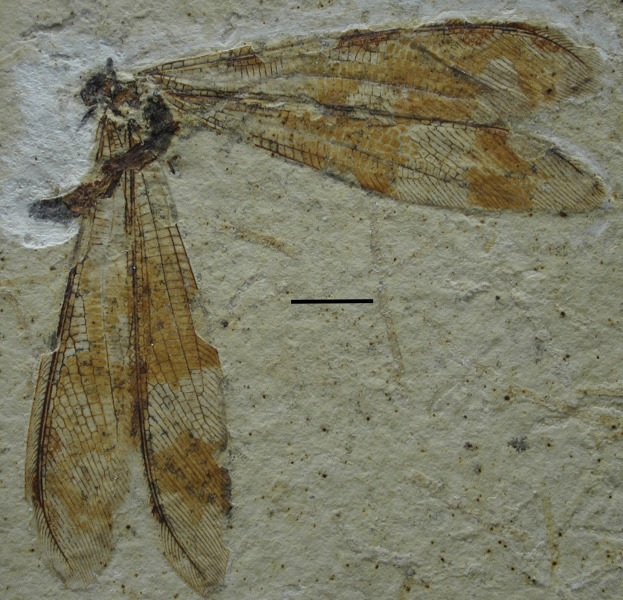
Even after the recognition of their fossils, the wing venation was still not recognizable that would have led to assignment of their subgroups and hence division of them under respective heads. But the palaezoic fossils, however gave some records of wing venation style. As a result, the determination of the fossil planipennia was possible due to the comb like proliferation of the branches of the wings of Palaeodictyoptera and Megasecoptera that were, then, tentative. It was in 1989, when ACHTELIG gave the evidence of the characters of Palaeodictyoptera and Megasecoptera.
According to science direct, a psychopsidalike lacewing, preferably from the family Kaligrammatidae, was the largest recorded Neuropteran species till date, which was characterized by a large wing of an approx. span of 24 cm and with large ocelli’s. There were also evidences that this have been existed from the Jurassic.
The order Neuroptera is thoroughly distributed worldwide, Antarctica is an exception. Whereas North America, Europe and Asia have a population diversity of rich neuropteran fauna, which is also prevalent among other countries like Australia, Africa and South America. Apart from this, New Zealand and South Pacific regions have very subtle amount of Neuroptera fauna, on the other hand Australia has a rich diversity. On the other hand Hawaii contains the world’s most complex and important species which are endemic as well, Hemerobiidae and Chrysopidae. India, as well, have numerous evidences of the Chrysopidae population distributed throughout the country, majorly the North-Eastern part. Japan, Ryukus, Taiwan, Yugoslavia and parts of Galapagos are also inhabited by the Neuropteran population.
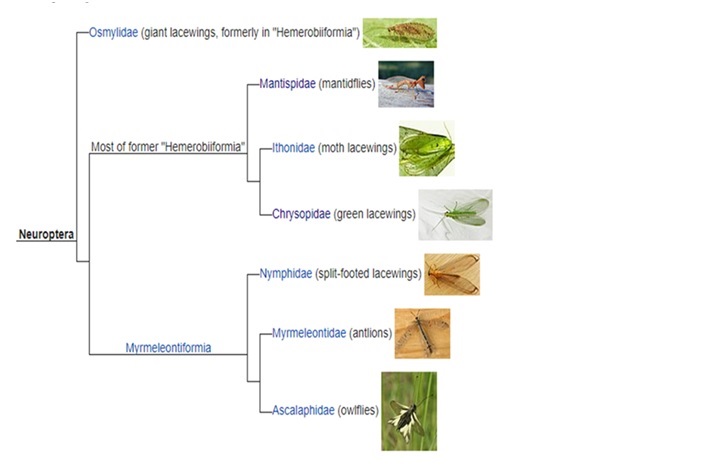
From the understanding of the phylogeny of neuropteran species, it has been found that Megaloptera and Raphidioptera are not grouped with neuroptera strictly. Moreover, Mantispidae and Myrmeleontidae, were confirmed as the closely related groups by cladistics analysis. Though, there are many unsolved issues in grouping the major lineages of neuroptera. The evolutionary context of neuropteran phylogeny has been explored using mitochondrial DNA information, which shows that Hemerobiiformia remains paraphyletic group and Myrmeleontiformia as the monophyletic one suggesting the above cladogram.
Phylogenetic studies reveals that the relationships among the neuropteridan orders, are confirmed and brought into light only after studying their interdependence on each other and some morphological similarities such as male and female comparative data for genital structures, larvae head structure and nature of mouth parts. The mitochondrial gene assembly, as well as the molecular-genetic relationship have also been taken into account. Earlier there were enough evidences for the sister grouping among the Megaloptera, Neuroptera and Raphidioptera orders.
Neuropteran families, mainly like Chrysopidae, Hemerobiidae, Dilaridae and Coniopterygidae are the most important natural and biological ways to control the over raging pest population. Many economical important crops can be saved by employing the Neuroptera as a method for integrated control of pest management. Being such an important group of potential importance, Neuroptera is still now a less emphasized way of IPM, which has now been evolving. However, the predacious lady beetles have earned this place much before Neuroptera came into being. Alike the predacious lady beetles, immature lacewings are also predaceous in nature. The immature and adult Neuropterans are also referred to as Aphid-Lions as they generally feed upon aphids and hence proven to be beneficial in so many ways. As already mentioned, they protects the crops from pest-insects. The availability of the lacewings depend upon time and their favorable season, according to studies they were found to be more active during night and generally available during the months of early winter. The adult lacewings may can be found throughout the year and the immature Neuroptera can be found settled in pits and digs prepared by them in dry dusty soil areas.